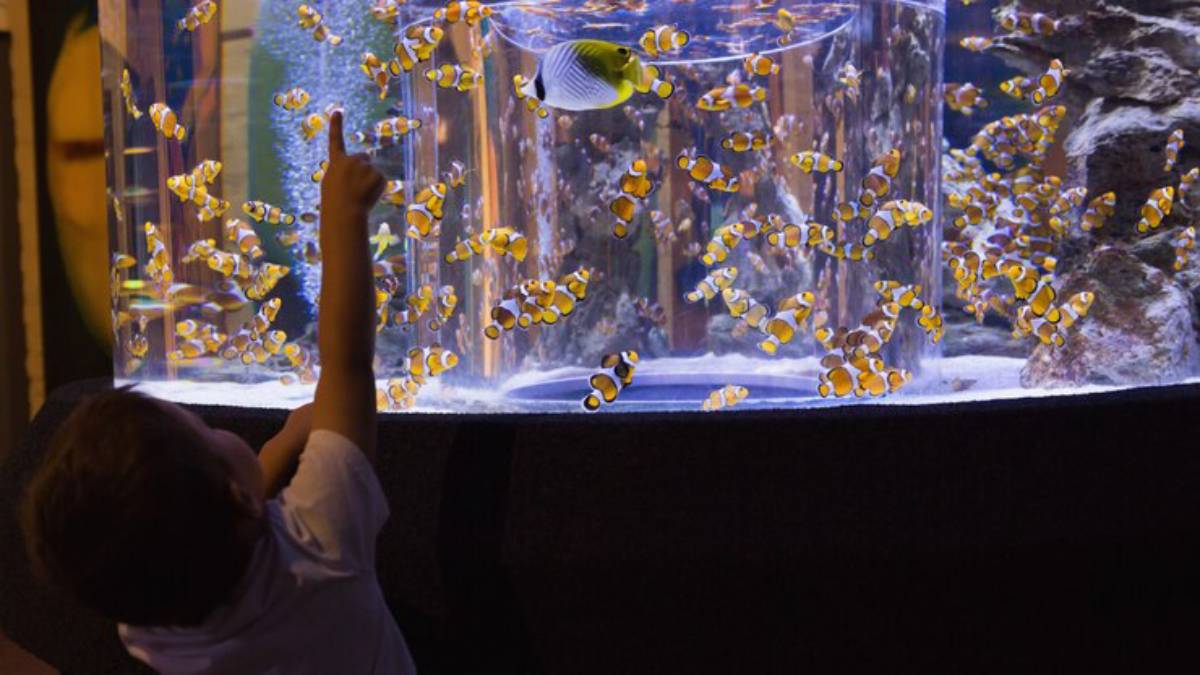The Pets Care Blog

Timer-Controlled Lighting: Why It Helps Your Tank
Imagine living in a world where the sun rises and sets at random times every day. One morning, it’s bright at 4 a.m., and the next, it stays dark until noon. You’d be pretty stressed, right?
Well, that’s what your fish experience when their lighting isn’t consistent.
Proper lighting is more than aesthetic — it’s biological. Aquarium light schedules influence your fish’s internal rhythms, behaviour, and health. And the easiest way to maintain this rhythm is with a timer.
In this guide, we’ll explore why timer-controlled lighting matters, how LED light timers simplify your setup, and the benefits of consistent light control in your aquarium. Whether you’re a beginner or upgrading your current routine, this post will light the way.
Why Consistency Matters in Aquarium Lighting
In nature, light rises and fades predictably. Fish and plants follow this rhythm to manage daily tasks such as feeding, breeding, and resting. When tank lights are unpredictable — or left on too long — it throws off their entire system.
Benefits of Consistent Lighting:
- Reduces stress and aggression
- Regulates sleep-wake cycles in fish
- Prevents overgrowth of algae
- Promotes healthy plant photosynthesis
- Supports natural behaviour and breeding
Too much light can overstimulate fish and accelerate algae growth. Too little can stunt plant growth and confuse your tank’s inhabitants.
What Is Timer-Controlled Lighting?
Timer-controlled lighting uses a simple device or built-in feature that turns your aquarium lights on and off at set times. This allows for precision and reliability, even if you’re not home.
There are two main types.
1. Plug-In Timers
- Mechanical or digital
- Your light plugs into the timer, which then plugs into the wall
- Basic models offer 24-hour cycles
2. Built-In Light Timers (Often in LED Systems)
- Programmable features within the LED lighting system
- Allow for gradual ramping (simulated sunrise/sunset)
- Offer advanced control with dimming, colour adjustment, and Bluetooth or app integration
How to Set an Aquarium Light Schedule
The right schedule depends on your tank’s residents and setup, but consistency is the golden rule.
General Guidelines:

- Fish-only tanks: 6–8 hours of light
- Planted tanks: 8–10 hours for optimal growth
- Reef tanks: Varies by coral — often 10–12 hours with ramping
Example Schedule:
- Lights on: 10:00 AM
- Lights off: 6:00 PM
- Simulated ramp up/down (if available): 30 minutes
Timers allow this without the need for manual switching. This is great for when you’re travelling or working late.
Key Benefits of Using a Light Timer
Timers do more than spare you the trouble of flipping a switch. They offer real, measurable improvements in your tank’s balance and aesthetics.
1. Improved Fish Health and Comfort
Fish need darkness to rest. Without proper light cycles, they can become skittish, aggressive, or sluggish. A regular schedule helps mimic natural day-night cues, encouraging calm, consistent behaviour.
2. Simplified Plant Care
Aquatic plants rely on photosynthesis, which is triggered by light. A stable schedule gives them the energy they need. It also stops excess algae from growing due to too much light.
Planning a planted tank? Pair your lighting strategy with the right flora using choosing plants for a low-maintenance tank.
3. Algae Control
Overexposure to light, especially in tanks with high nutrients, invites algae blooms. Timers help you control lighting. They prevent green water, glass films, and stringy messes.
4. Hands-Off Convenience
Busy schedule? Weekend away? No problem. A light timer keeps your tank consistent even when you’re not around, reducing the risk of human error.
5. Supports Breeding and Behaviour Cycles
Many species depend on light cues. These cues signal when to breed, rest, or feed. Timers help you simulate those natural patterns more effectively.
Features to Look For in a Good LED Light Timer
Whether built-in or standalone, a good LED light timer should give you easy and reliable control.
Must-Have Features:
- Programmable on/off times
- Compatibility with your lighting system
- Backup memory (so it retains settings during power outages)
- Simple user interface
Nice-to-Have Features:

- Ramping (sunrise/sunset simulation)
- Multiple zone control (for large tanks)
- Bluetooth or app connectivity
- Dimmer settings to fine-tune light intensity
If you’re choosing a lighting system from scratch, look for one with a built-in programmable timer. It’s less of a hassle and integrates smoothly.
Common Mistakes to Avoid
Setting a timer sounds simple — and it is. But a few small errors can affect your tank’s balance.
Mistakes to Watch For:
- Too long lighting durations (12+ hours encourages algae)
- Random manual overrides disrupting the cycle
- Not adjusting for seasonal changes in room light
- Using a faulty or cheap timer with poor timekeeping
- Placing the tank near a window, adding uncontrolled natural light
Light control isn’t just about how long — it’s also about how consistent.
Do You Need a Timer for a Fish-Only Tank?
Absolutely. Even in a tank with no plants, fish benefit from routine. Without a timer, lights often stay on too long or get forgotten, leading to stress and behavioural issues.
Fish in homes with irregular lighting, like drawn curtains or late overhead lights, are more likely to get stressed. A timer offers a fixed anchor to their environment.
LED Timers vs Smart Plugs: What’s Better?
Both work — it depends on your needs.
Smart Plugs:
- Controlled via a phone app
- Often programmable by day of week
- Good for simple on/off control
LED Light Timers (Built-In):
- Designed for aquariums
- Often includes ramping, spectrum control, and dimming
- Better for planted tanks or advanced control
Smart plugs are great for budget builds. If you’re upgrading your lighting or need better control, get a programmable LED system.
Can You Use a Timer With All Light Types?
Most standard aquarium lights (LED, fluorescent, CFL) can be plugged into an external timer.
Exceptions:
- Lights with manual touch switches (those that reset to “off” after power loss)
- Some high-output reef lights requiring proprietary controllers
Check compatibility before purchase — or choose lights advertised as “timer-friendly.”
Creating a Natural Environment With Timers
A light timer helps you simulate the natural rhythms of a lake, stream, or reef. With a good light and smart placement, your aquarium turns into more than just a display. It becomes a balanced mini-ecosystem.
Add a Ramp Effect:
Simulated dawn/dusk transitions are gentler than abrupt on/off lighting. They help skittish species acclimate and reduce light shock.
Coordinate With Feeding and Maintenance:
Schedule lights to turn on 15–30 minutes before feeding, and off after your evening routine, giving you a consistent viewing window.
When paired with a quality light and strategic placement, your aquarium becomes more than a display, just like we discussed in arranging décor for fish safety and aesthetics.
Conclusion: A Small Tool With a Big Impact
A timer-controlled lighting system might seem like a small detail, but it can completely change the way your aquarium functions. From promoting fish health to making your life easier, it’s one of the smartest upgrades you can make.
Whether you opt for a simple plug-in timer or a full-featured LED controller, consistency is what matters most. Create a routine, stick to it, and let your aquarium thrive on time.
Now it’s your turn — take a moment today to review your lighting schedule. Set up a timer, make adjustments, and enjoy the peace of mind that comes with a beautifully lit and balanced tank.









